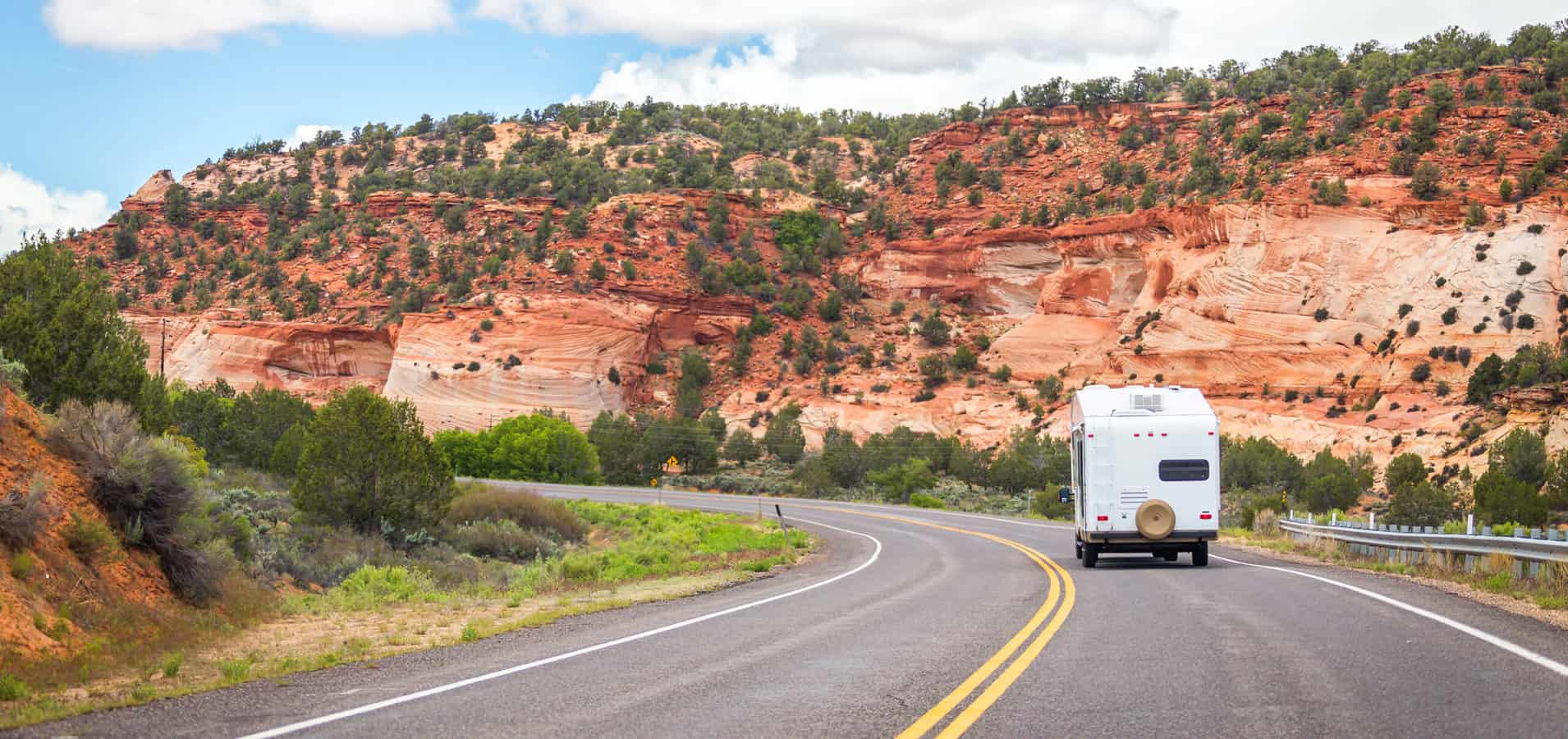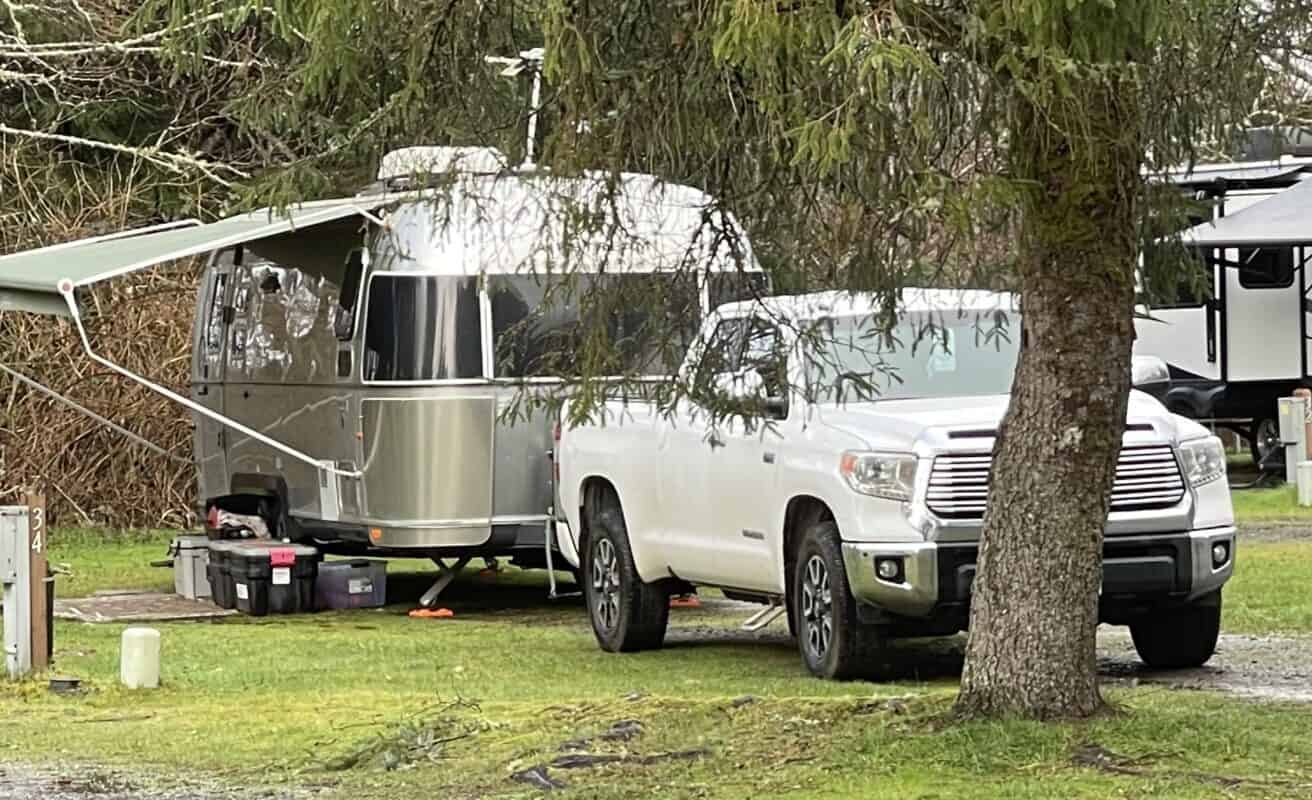
While shopping for an RV, some wonder whether a fifth wheel would have a generator. The answer is yes, most fifth wheels do have a built-in generator. The question is whether it is big enough to do the job that it’s needed to do. Some folks don’t require a generator for much, while others prefer to boondock using the air conditioner, perhaps two, in addition to the microwave, toaster, and television. Take into consideration that some things require more power than others.
When shopping for fifth wheels, be sure to check out the strength of the generator. Most fifth wheels have Onan generators in a compartment up front near the hitch. If you need a lot of power, it should preferably be a 50 amp instead of 30 amp. Possibly you may need to purchase an additional small generator if it’s only 30 amp.
Make sure the built-in generator is big enough to power the entire fifth wheel. Manufacturers often skimp on them. For example, if a 30 amp is enough for your air conditioner, it likely won’t be enough for running anything else. It also won’t be enough if your fifth wheel has dual air conditioners. Some people use two smaller generators as they are easier to carry, especially if you add the gasoline after you reach your destination. One thing to look for in a generator is whether it is dual fuel. Also, solar power can come in handy to assist with your power needs, if it is available on the model of the fifth wheel you’re looking at.
On a fifth wheel w/ two air conditioners, be sure you get one big enough to power them both. Air conditioners need more power at the onset but then require less. Most 50 amp generators have dual feeds for a total of 100 amps. Generators with 30 amp, however, usually have only one feed.
How to Decide Amp Hours
It requires a little detective work to find out what your power needs are. Most information for appliances is found on the back, bottom, or can be found online. Watts divided by voltage = amps is the equation to be used. Don’t forget simple things like a coffee maker or less obvious things like the blower on a propane furnace. To complicate matters a little more, using an inverter ‘wastes’ amps, so more is required for that coffeemaker and everything else, for that matter. Once you have determined what your needs are, keep the information handy for future use to avoid having to do it all again. A 50 amp service RV provides a maximum 12,000 watts. Even with an adapter, your 30 amp service RV won’t receive more power than the 3,600 watts it can handle. This will help you determine whether the built-in generator, usually an Onan, is going to be enough or whether you’ll need to purchase a second generator.
Is an Inverter Needed?
Often a fifth wheel will come equipped with both an inverter and a generator. Instead of trying to find that perfect fifth wheel that also has all the equipment included, it might be best to find a fifth wheel you and your family will be happy with and upgrade as needed. If you’re going to invest in an inverter, lots of people recommend a pure sine wave inverter. They may cost a little more upfront but generally perform better. A pure sine inverter can be found priced $200-$400.
Decreasing the Noise Level of the Generators
The first concern regarding generators is whether they are powerful enough to meet your needs. The second question that often comes up, is whether the Onan generator is quiet. After all, if it’s built into the fifth wheel, it can’t be moved a distance away. Fortunately, resonators can be purchased and installed to lower the noise level of the generator. These can be bought for about fifty dollars. Check to see what other items may be needed with the resonator you purchase. A clamp might also be needed. Depending on the resonator used and model of generator you have in your fifth wheel, it could lower the noise level by up to one dB(A). There are other noise-reducing solutions people use, however, make sure it is safe and doesn’t void your warranty.
If you have found it necessary to buy a generator to supplement your built-in generator, you can move the portable generator a distance away from the fifth wheel to lower the noise level. Many camping enthusiasts insist on the Honda as one of the quieter generators you can buy. The weight is usually not too bad. It might weigh about 45 lbs., depending on the model you buy. Honda generators can range in price from $999.00 at Amazon to $2199.00 at Max Tool.
Solar Energy
While many fifth wheels come either solar prepped or include solar energy. Enthusiasts agree that going solar isn’t for everyone. Rather than being a different source of energy, it represents a life-style change. In addition, a lot of campers are unaware of what solar energy can and can’t do. Solar energy might run the microwave, but it isn’t going to power the air conditioner, much less a dual air conditioner set-up. And just as some manufacturers might skimp on the strength of the generator, mechanics often have to replace the wiring installed in fifth wheels for solar energy, because the wiring included even in late model fifth wheels is not adequate to do the job and may even a pose risk of fire. Before deciding you don’t need the generator, make sure you do your homework in knowing what you can and can’t do with solar energy.
Avoid the Hazards of Carbon Monoxide and Electric Shock
Using generators safely is another concern that needs to be taken seriously. Generators can put out carbon monoxide which can build up with no odor to warn you or your family. Fifth wheels often come with carbon monoxide detectors. Make sure it has a fresh battery. If there are no carbon monoxide detectors in your fifth wheel, purchase a few of them right away and place them throughout your fifth wheel. Because a generator has been used before with no problems might cause someone to think there are no carbon monoxide fumes. Fumes can slowly build up over time until they become deadly. If you have a portable generator, move it away from your fifth wheel as far as possible and turn it so the exhaust is not facing the doors and windows of the fifth wheel. If it is raining, you might be tempted to put the generator under your awning. This could expose you and your family to carbon monoxide. Instead, arrange a canopy to shield your generator from the rain at a distance away from the fifth wheel. It is further recommended that a generator tent is purchased and used to keep a portable generator dry. Rain can not only cause damage to a portable generator, but electrocution and serious shock can take place. A generator safety canopy designed to fit on a generator such as GenTent can be purchased for a couple hundred dollars online at https://www.gentent.com. Always keep the generator on a dry surface. Make sure power cords are not lying in standing water or on wet ground.
Safety Features
When purchasing your generator, check to see if there are GFCI (ground fault circuit interrupt) outlets. These outlets shut themselves off when they get wet or detect an electrical ‘leak’ which can be a dangerous shock risk. If your portable generator shuts off, do not approach it. Contact the manufacturer for what steps should be taken. Safety is always more important than convenience.
How to Find Out If a Second Generator is Needed
If after all of your efforts, you just aren’t sure if you’ll need an additional generator, you can always stay a night in your fifth wheel while still at home before going camping. Sometimes that trial run at home will tell you more than all the math can tell you. Stick with your normal routine. If you use a blow dryer in the morning, use a blow dryer on your trial run. Use the coffeemaker. You get the picture. Having this information before you camp out for somewhere can be helpful. You’ll know if a second generator will be needed.
As the industry progresses, there are more energy sources available to power an RV at least partially. However, lots of campers are still choosing a generator for their needs, while possibly supplementing with solar power, for instance. However, you might choose, do so with the understanding that it really is an individual choice and there is no right or wrong answer, other than what makes you and your family happy as you go camping together and what method supplies all of your energy needs the best. Sometimes more than one alternative can serve that purpose.




We own a 2009 DRV Mobile Suites fifth wheel. It has a built-in generator in a compartment under the nose/hitch area. We recently had the “belly” under-side rubber material of the rv “rip off”. So we took it in for a repair and they recovered the underside. We aren’t sure if they were supposed to cover the large “hole” that is built under the generator and we don’t remember if that part of the belly was open. My husband thinks it needs ventilation.
How do I find out if that area right under the built in generator is supposed to be covered like the rest of the rv’s underside?? The generator is in a locked compartment right under the “hitch”.
Thanks in advance for your reply.
Barb Weiler